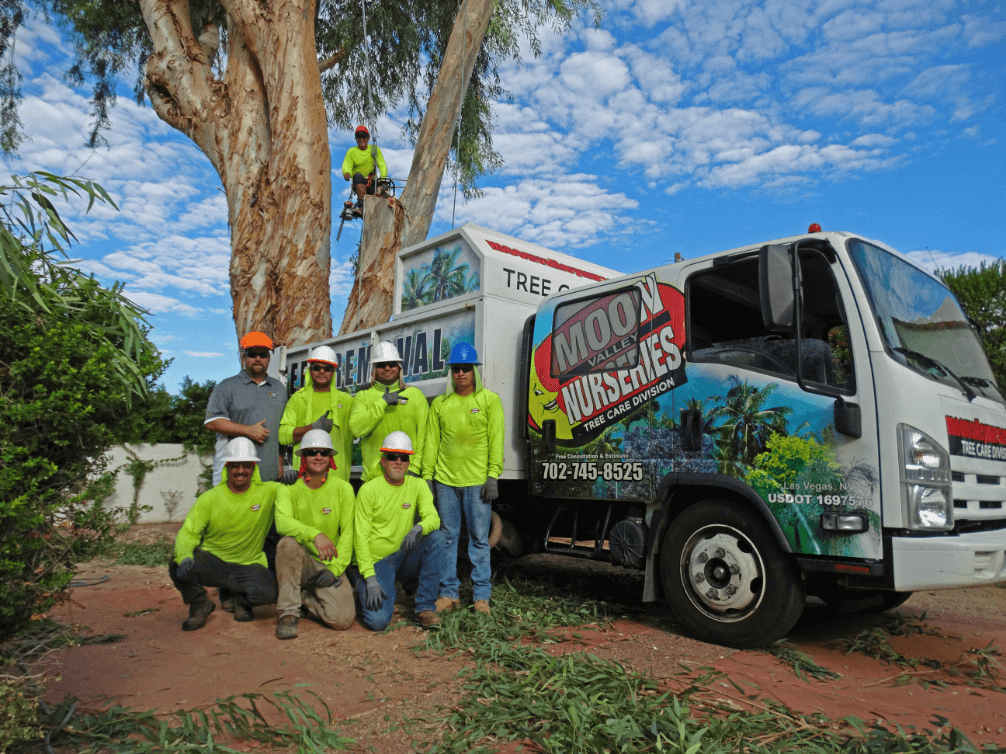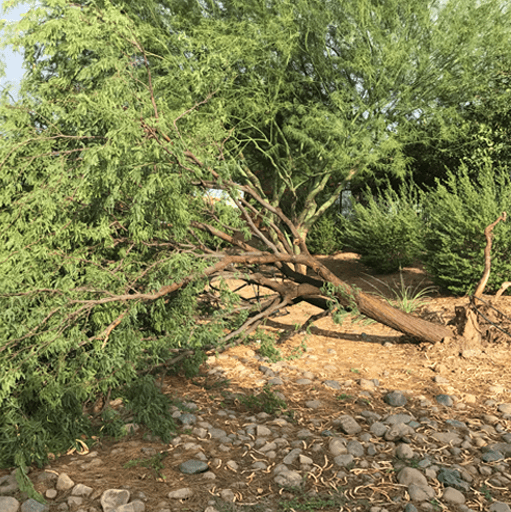Monsoon Season

Monsoon Season
The term monsoon derives from the Arabic word "Mausim" meaning "season" or "wind shift." It is, quite literally, a shift in wind direction that causes the meteorological event. Depending on their size and duration, a downburst may be called a "macroburst" or a "microburst." The period from June 15th through September 30th has been defined as " Monsoon Season." This period of summer usually brings the extreme heat, which is sometimes followed by excessive moisture in the air causing vibrant thunderstorms brought on by the very fast wind. Thunderstorms present an array of hazards that often strike suddenly and with violent force. When preceded by heavy rain, a tree will be even more vulnerable to heavy winds.
Monsoon Season
The term monsoon derives from the Arabic word "Mausim" meaning "season" or "wind shift." It is, quite literally, a shift in wind direction that causes the meteorological event. Depending on their size and duration, a downburst may be called a "macroburst" or a "microburst." The period from June 15th through September 30th has been defined as " Monsoon Season." This period of summer usually brings the extreme heat, which is sometimes followed by excessive moisture in the air causing vibrant thunderstorms brought on by the very fast wind. Thunderstorms present an array of hazards that often strike suddenly and with violent force. When preceded by heavy rain, a tree will be even more vulnerable to heavy winds.

Heavy rain can cause an over-saturation of the soil, so even a tree with healthy roots has a weaker hold. In this case, the bulk of the root system will become exposed if the tree falls over. Even one's best efforts cannot prepare a tree to withstand the fiercest of winds accompanying monsoon storms. However, there is a lot of preparation you can and should do to diminish potential storm damage to your trees. The most important tip is to pay attention - monitor your trees when heavy wind or rain is coming, and take the appropriate steps as needed. You can always contact us if you have a particular concern.
Basic Tips
- Water, mulch, and fertilize your trees regularly and properly. Healthy trees will withstand the elements more successfully than malnourished and improperly watered trees.
- Whether your trees are young or old, be sure to prune annually. (Every 2 to 3 years on certain varieties.) Having your trees trimmed by a professional who understands healthy tree structure is your best bet for avoiding weather-induced problems. Poorly pruned trees can lead to snapping limbs and trunks during high winds.
- Practice proactive tree care - any money spent on preventive maintenance of your trees will always be much less than replacing them, especially if they cause any damage to cars, roofs, or structures if they go down.
- Clean up your yard of any leaf debris or landscape trash. This will prevent more work for you when the high winds blow debris all over your yard, and this helps prevent pool filters from becoming clogged and burning out.
Staking Trees
- Staking provides a young tree with the support it needs until the trunk is strong enough to hold its canopy upright. Most trees will not need the support of stakes for longer than a year, but the stakes should be used for at least one growing season. As soon as the tree can stand on its own, remove the stakes.
- Use 8-foot stakes or lodge poles (available at Moon Valley Nurseries). These stakes should be at least 6-8 feet tall and three inches in diameter to provide optimal support.
- Determine the direction of the prevailing wind and insert the stakes exactly opposite one another, about 2 feet from the trunk, in line with the wind. For example: if the wind direction is westerly, then place the stakes North & South.
- Drive the stakes vertically at least 2 feet into the ground. Try to bury the stakes so that both emerge the same height from the ground. When finished, stakes should stand upright at about 4 feet.
- Cut two pieces of flexible wire, each measuring at least 5 feet long. Use rubber (or cut up an old garden hose) to create two 18-inch lengths. Slip these rubber sleeves over the wire and wrap the wire around the tree so that the rubber is protecting the trunk from the wire. Pull equal lengths of the wire parallel to the ground and attach to the top of the stake. Twist the wires together on the outside of the stake to make the wire nice and taut - nip off any excess with wire cutters.
Care and Maintenance
- Dead, dry wood is unpredictable. It is brittle and cannot bend or give under pressure like healthy, living tree branches.
- Cracks are clear indicators of potential branch failure, with splitting of cracked branches inevitably occurring sooner or later. Prune these cracked branches to ensure no damage is caused by splitting.
- Look for signs of decay, as evidenced by fungal growth or hollow cavities. This is a sign of structural weakness.
- Pests, such as the Palo Verde Beetle, can exacerbate a tree's health problems. These pests typically target trees that are already sickly, so keeping your trees healthy will deter pests.
- Can you see some sky through the tree? Keeping your trees thin is the single most important thing to do in order to "storm-proof" them. Simply put: the thicker a tree is, the more susceptible it is to damage in heavy winds. Even for a tree that is otherwise perfectly healthy, overly dense foliage poses a safety hazard during stormy weather. A dense canopy will not allow the wind to pass easily through, and the resistance to wind can cause branches to break or even bring the entire tree down. This especially applies to weight at the ends of branches, which is why stripping only the lower parts of the branches is not adequate. The leaves will return as the tree survives the monsoon.

-
BACKYARD BUILDER
Design your own custom landscaping. Learn more.

-
SCHEDULE A FREE CONSULT
Let our design experts help with your next project. Get started.




Validate your login